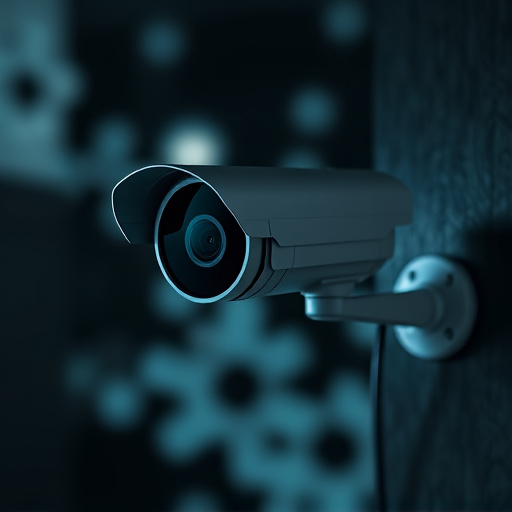Solar-powered fake camera setups offer an eco-friendly, cost-effective security solution. These devices mimic real cameras with sun-charged batteries and realistic wiring, deterring intruders without unsightly infrastructure. Strategically placed in sunny areas, they provide comprehensive coverage. Legal and ethical considerations are crucial for responsible deployment, respecting privacy and local laws.
Deterring criminals without breaking the bank? Consider solar-powered fake security cameras, an innovative and cost-effective solution. This comprehensive guide explores the intricacies of these simulated devices, from understanding their solar-charged operations to unraveling the benefits and legal aspects. We’ll break down the components of a realistic wiring system, ideal installation practices, and real-world use cases for homeowners looking to enhance security without the hefty price tag.
- Understanding Solar-Powered Fake Camera Setups
- Components of a Simulated Wiring System
- Benefits and Use Cases for Homeowners
- Installation Tips for Optimal Effectiveness
- Legal Considerations and Ethical Usage
Understanding Solar-Powered Fake Camera Setups
Solar-powered fake camera setups have gained popularity as a means to deter crime and create an impression of enhanced security, especially in residential and commercial settings. These systems operate on renewable energy, utilizing solar panels to charge internal batteries during daylight hours. This eco-friendly approach is not only cost-effective but also cleverly conceals the absence of live surveillance by emulating the appearance of traditional wired cameras with visible cables.
The simulated wiring adds an extra layer of realism, making it difficult for potential intruders to identify whether the camera is active or a decoy. This innovative design allows property owners to benefit from improved safety measures without the visible infrastructure often associated with security systems.
Components of a Simulated Wiring System
A solar-powered fake camera setup is a sophisticated and realistic-looking security solution that simulates the presence of an actual surveillance system. The components of such a simulated wiring system include a solar panel, a battery, a fake camera housing, and various wires and connectors. The solar panel collects energy from sunlight during the day and stores it in the battery, ensuring continuous operation even without external power sources.
The fake camera housing is designed to look identical to an authentic security camera, complete with LED indicators and weatherproofing for outdoor installation. Wires and connectors strategically mimic the appearance of genuine security wiring, running from the solar panel and camera to a central control system or alarm panel. This comprehensive setup not only enhances the aesthetic realism but also serves as a deterrent to potential intruders, providing the look and feel of robust security without the actual cost and complexity of a full surveillance system.
Benefits and Use Cases for Homeowners
Installation Tips for Optimal Effectiveness
When setting up a Solar-Powered Fake Camera, placement is key for optimal effectiveness. Mount the camera in an area with direct sunlight exposure during the day to ensure maximum power generation. This could be on a window sill, a wall, or even a post in your yard. The goal is to catch potential intruders at various angles, so consider installing multiple cameras around your property for comprehensive coverage.
For added realism, simulate wiring by placing small, strategically positioned cables near the camera. This not only enhances the visual impact but also makes the setup appear more authentic. Remember to hide any visible connectors or wires properly to maintain the illusion. Regularly test the solar panel’s functionality and ensure the battery is charged to guarantee the camera’s continuous operation, especially during cloudy days or at night.
Legal Considerations and Ethical Usage
When setting up a solar-powered fake security camera, it’s crucial to understand the legal and ethical dimensions involved. While these simulated cameras can be an effective deterrent for potential intruders, their use raises concerns about privacy and false alarms. In many jurisdictions, there are strict regulations regarding the placement of surveillance equipment, especially in public spaces and near private residences. Installing a fake camera without proper authorization could lead to legal consequences, including fines or even criminal charges.
Ethically, it’s important to consider the potential impact on individuals’ sense of security and privacy. Using these devices should be done responsibly, with transparent practices that clearly communicate their nature as decoys. Homeowners or business owners deploying solar-powered fake camera setups must ensure they comply with local laws and respect the privacy rights of neighbors and passersby.
A solar-powered fake security camera with simulated wiring offers homeowners an affordable, eco-friendly option for enhancing home security. By understanding the components and benefits outlined in this article—from the technical aspects to legal considerations—you can make an informed decision about whether a fake camera setup is right for your needs. Remember, while these devices provide a visual deterrent, they should be used ethically and responsibly to maintain a safe and secure environment without misleading neighbors or authorities.
